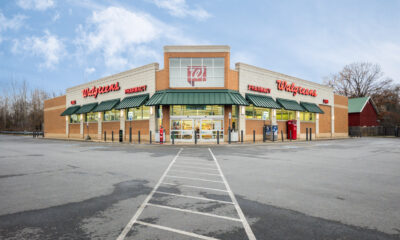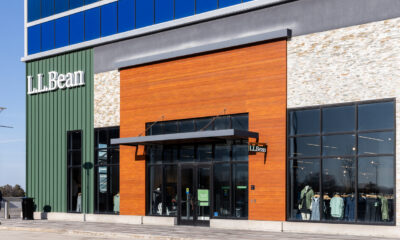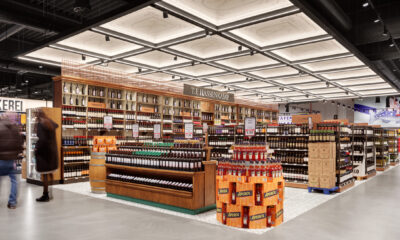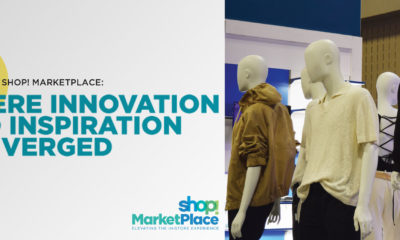–Sponsored Content–
McDonald’s, like most other restaurants, started out small. Its first franchise was opened in 1955 (at the time, the ninth McDonald’s location) by businessman Ray Kroc. Kroc later bought out the founders, brothers Richard and Maurice McDonald, and led the charge on an aggressive international expansion plan.
Fast forward to today and McDonald’s is one of the most popular restaurant chains in the world, reportedly serving up to 68 million customers a day. Its meteoric success is, of course, no coincidence, and it’s not due to having the best burgers or the cheapest prices. It is, at its core, a business model that revolves around getting the operations of each restaurant down to an exact science.
All aspects of a McDonald’s restaurant are meticulously planned using vast amounts of data. The McDonald’s analytics teams look at every facet of restaurant operations – from equipment and layout to processes and staffing – to determine how it can operate as efficiently as possible to maximize profit. This relentless pursuit of data-driven, optimization-focused decision making has kept McDonald’s on top.
Like most other industries, the retail industry at large is facing a similar data-driven transformation, one focused on how shoppers are buying and analyzing their off- and online habits. Retailers have become obsessed with tracking the customer journey, from online to in store and everything in between. The goal is to understand the habits and life cycles of shoppers so they can better convert those patterns to dollars, and those page views and store visits to long-term, repeat customers.
When it comes to collecting data, online retailers have the upper hand over their brick-and-mortar counterparts. They can figure out how to maximize sales with the ability to track, test and tweak any part of the shopping experience on their websites. They can identify patterns, test different hypotheses and use those interpretations to improve sales conversions.
Advertisement
Digital merchandising is a great example of how e-commerce retailers harness data to their advantage. The way products and promotions are displayed online is determined through careful analysis and testing. Let’s say you have a new product and you’re trying to figure out how it should be presented. You’d probably test out a few different image options in focus groups and the one with the highest conversion rate is the one you’d end up using. Having detailed analytics at your fingertips means you can establish patterns, test different options and land on the solution that’s going to yield the best sales. In other words, there’s no guesswork involved. That’s because digital merchandising is not an art: it’s a science.
For most brick-and-mortar retailers, however, merchandising is still a guessing-game.
Similarly to online merchandising, not all in-store displays are created equal. But unlike e-commerce retailers, physical retailers are usually blind to the performance of their displays. They have no idea which display will have the highest conversion rate, and have no system in place to track the sales data related to each. For example, a retailer may have two different displays featuring the same products, but no real way to assess which one is performing better.
Beyond not understanding how their merchandising efforts impact store performance, many brick-and-mortar retailers may not even know if their displays look the way they were designed to. Consider this: According to RIS, almost half of retailers only measure compliance 1-2 times a year or less, while nearly 20 percent never measure it at all. So many retailers will send out directives to their stores, but aren’t able to verify that their directives are being executed to brand standards.
Physical retailers have yet to learn “The McDonald’s Lesson.” Many retailers seem to understand the importance of collecting data to improve store performance, but they can’t see the forest for the trees. They’re focused on how customers are buying, what they’re buying and where they’re buying, but completely neglecting the importance of crunching the data behind the in-store experience, how it impacts the customer journey, and ultimately, sales.
Merchandising is, of course, an art. In order for retailers to succeed in today’s competitive market, they have to understand that it’s also a science. It’s time for retailers to take off the blindfold. You can know what you’ve sold, but you can never know what you could have sold. After all, as the saying goes, “If you can’t measure it, you can’t manage it.”
Advertisement
Marc Gingras is the CEO of Foko Retail, a platform that delivers the science of retail execution and merchandising. He is an entrepreneur and angel investor, and sold his last venture, Tungle.me, to Blackberry. Marc holds an MBA from INSEAD, a MASc in Management Sciences from the University of Waterloo and a BASc in Mechanical Engineering.


 Headlines6 days ago
Headlines6 days ago
 Headlines1 week ago
Headlines1 week ago
 Headlines1 week ago
Headlines1 week ago
 Headlines2 weeks ago
Headlines2 weeks ago
 Specialty Non-Apparel2 weeks ago
Specialty Non-Apparel2 weeks ago
 Headlines3 days ago
Headlines3 days ago
 Headlines1 week ago
Headlines1 week ago
 Headlines1 week ago
Headlines1 week ago




















